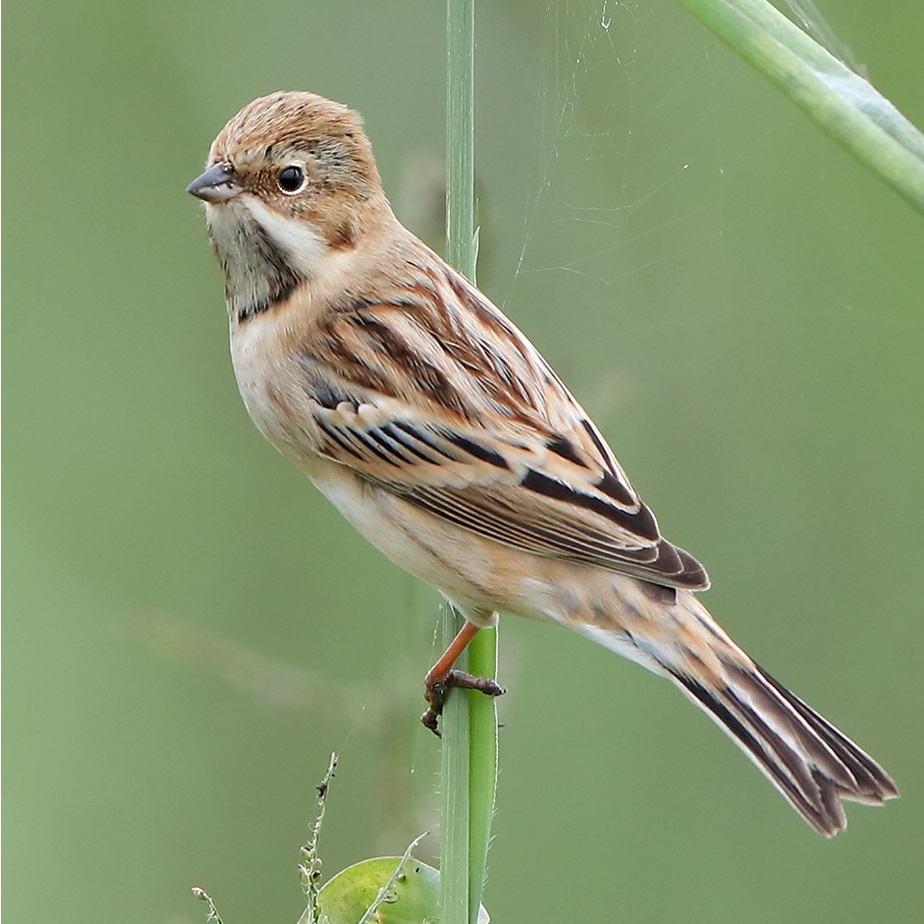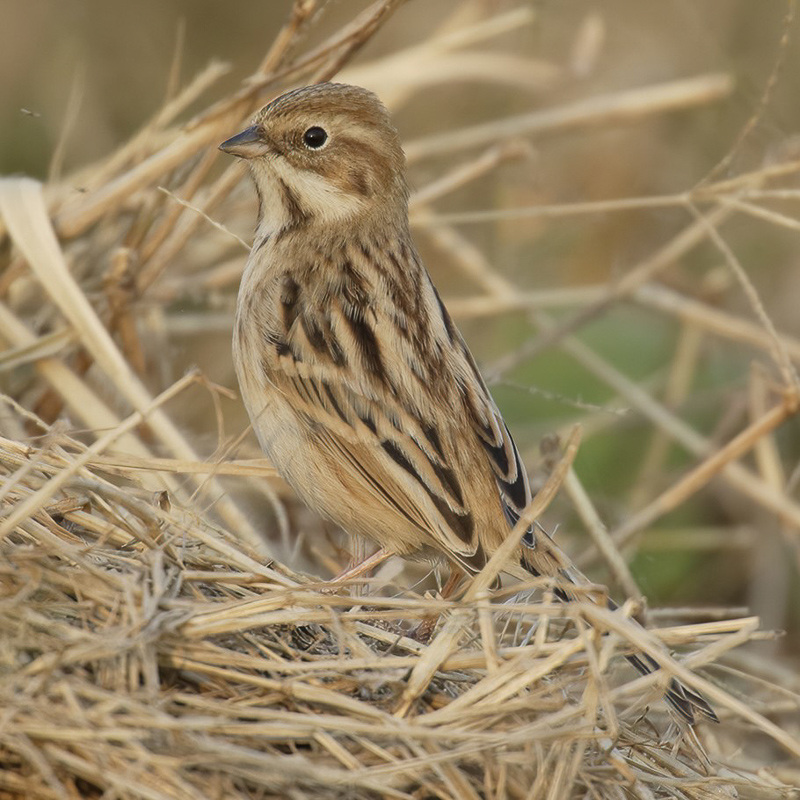Pallas’s Reed Bunting Emberiza pallasi 葦鵐
Category I. Rare autumn passage migrant and possibly a winter visitor to open-country habitats including agricultural and fish pond areas and reedbed.
IDENTIFICATION

Nov. 2018, Michelle and Peter Wong. Male.
12.5 – 14cm. Smaller size (close to Little Bunting) and smaller bill compared to most Common Reed Buntings. Bill has dark upper and pale lower mandible (if not adult male); the culmen is straight unlike most other buntings. In non-breeding plumage underparts usually pale with little streaking (unless juvenile plumage retained). Buff lines at side of mantle and fringes to tertials are broad and obvious. Greyish lesser coverts separate from Common Reed Bunting, though not easy to see. Extensive black on throat on this bird indicates male.

Nov. 2006, Martin Hale. Female.
Paler rump, more obvious in flight. The sides and on some birds the lower border to the throat is dark and obvious. Restricted black on throat of this bird indicates female.
VOCALISATIONS
The call of the nominate subspecies is a sparrow-like ‘chee-ru’ or chrr-ree’.
The call of the more southerly breeding subspecies lydiae, which could potentially occur in HK, is obviously different: a buzzing, slightly nasal and sharply downslurred ‘zzeeyoo’ or ‘zzeeyup’.
DISTRIBUTION & HABITAT PREFERENCE
Open country species that occurs in agricultural and fish pond areas and reedbeds, and is thus largely confined to the northwest New Territories.
OCCURRENCE
Pallas’s Reed Bunting is a rare autumn migrant that has occurred from 28 September to 14 December.
The first record was of a first-winter female at a landfill area near Mai Po during 8-14 December 1991 that was trapped on the last date (Leader 1992). Subsequently, singles were recorded near Mai Po on 8th and 20 November 1995. There was then an 11-year gap until the next record, which was a juvenile on 28 September 2006.
Since then, it has occurred nearly annually, mainly from the final week of October to the end of November. The only record of more than one birds concerns up to three at San Tin during 29-31 October 2018.
BEHAVIOUR, FORAGING & DIET
Forages for seeds, rarely insects, and is thus seen mostly on the ground. Not particularly shy.
RANGE & SYSTEMATICS
Four subspecies are recognised. The nominate breeds in the Altai and Sayan Mountains of south Siberia east to Transbaikalia and west Amurland and south to north Mongolia. E. p. minor breeds from Transbaikalia east to the Russian Far East and northeast China. E. p. polaris breeds to the north in northeast European Russia east to the Chukotsky Peninsula, the Sea of Okhotsk and north Kamchatka. The most southerly breeding taxon E. p. lydiae occurs in south Siberia from Tuva through north, central and east Mongolia to adjacent parts of China (Copete 2021, Liu and Chen 2020).
CONSERVATION STATUS
IUCN: Least Concern. Population trend stable.
Copete, J. L. (2021). Pallas's Bunting (Emberiza pallasi), version 1.1. In Birds of the World (J. del Hoyo, A. Elliott, J. Sargatal, D. A. Christie, and E. de Juana, Editors). Cornell Lab of Ornithology, Ithaca, NY, USA. https://doi.org/10.2173/bow.palbun.01.1.
Leader, P. J. (1992). Pallas’s Reed Bunting: a new species for Hong Kong. Hong Kong Bird Report 1991: 127-130.
Liu, Y. and Y. H. Chen (eds) (2020). The CNG Field Guide to the Birds of China (in Chinese). Hunan Science and Technology Publication House, Changsha.

